- Home
- T. Jefferson Parker
Swift Vengeance Page 10
Swift Vengeance Read online
Page 10
“Are they going public with the mutilation?”
“No,” said Joan. “Not with the threat, either. Just that he was found stabbed to death in his home. We weighed the value of telling the whole truth against the terror it might cause. It felt really good to deny this bag of dirt his moment in the sun.”
“He doesn’t seem to want publicity at all,” I said.
“You watch,” she said. “He’ll change, now that he’s followed through with Kenny Bryce. Classic pattern of radicalization. Anger, disillusionment, curiosity, commitment, action, escalation. He’s got confidence now. He’ll seek credit. He’ll be vulnerable to recruiters. We’ll hear some kind of communication from him. I expect it. I dread it.”
She dug her phone from her coat. She held her device up close and it chimed and a cool glow played off her face. I looked for the hematoma but couldn’t make it out. Wondered if it prognosticated dire events, like my own scar did. Her pale raptor’s eyes seemed to draw the light from the screen as her thumbs flew and the glow from the phone changed colors. She stared at the screen for a long moment, then slid the phone back into her pocket.
“Sorry,” she said. “My handlers like a short leash these days. Your turn now. What did you learn about Hector Padilla?”
I told her about my conversation with youth imam Hadi Yousef, and the odd behavior of Padilla at Masjid Al-Rribat Al-Islami. His interest in Islam, and in finding a Muslim woman. His loitering outside the women’s prayer room. When I told her about the large sharpening stone that had fallen from Hector’s upturned backpack and landed on Hadi’s desk, Taucher’s breath caught. “Who carries around a fucking sharpening stone?”
“Hadi said it looked new.”
Taucher’s eyes narrowed, and, heavily made up or not, sparked with anger. “Is he still working at that hospital on Genesee?”
“He works a midnight shift,” I said. “And yes, he worked the night Kenny Bryce was killed.”
She betrayed some small hint of appreciation of my professional reach. “You have a source at First Samaritan?”
I shrugged. One of my old deputy friends was their head of security. For him, a call to the janitorial subcontractor was all it took.
“I need one more thing,” I said.
“You’re the neediest informant I’ve ever run.”
“I have to see the surveillance video from Kenny Bryce’s place.”
An SDPD police cruiser came by, tires swooshing through the quickly rising rainwater. The patrolman gave us a look.
“That’s physical evidence,” she said. “They’d have my head. God, I have to stop saying things like that. Anyway, the surveillance video is a tall order, Ford.”
“I understand.”
“Maybe you don’t,” she said. “The video is FBI property and I can’t let it leave the building. Not physically, not electronically. Either one gets me written up, demoted, or canned.”
“Send me a self-destruct file,” I said. “Then I can’t betray you.”
Exasperation. “They’ll see it the second I send it.”
“Have someone else send it.”
Spy versus spy, I thought. Until now, I’d never thought of Taucher as at risk from her own organization. I’d thought of her as a rock. Now I wondered about her short leash. But as I considered it, I saw that she would have her internal enemies, just like any other ambitious employee. Maybe more. Her fierce attitude. Her blunt humorlessness. Her legendary obsession with 9/11. The fact that she could never quite be a part of the old-boys network.
“And,” she continued, “if I bring you back to JTTF again to show you that video behind closed doors, heads will turn. ‘What’s with Taucher and that PI? What’s the paranoid old hag up to now?’”
I told her I knew what it was like to work in a large organization. What happens if it turns on you. “You might enjoy private work, Joan. Like mine.”
“Is that supposed to be funny?” But before I could answer, she said, “But you should see it—the Bryce video. I’ll think of something.”
“Six and a half seconds,” I reminded her.
“I’ve got an idea,” she said. “But get off my back, Ford. I don’t negotiate.”
I nodded and watched the rain pelting the bay, half amazed that Joan Taucher would put herself at risk to help her neediest informant. I’d been a genuine help to her so far—I’d brought Caliphornia and his threats to her instead of to her superiors—but how much more favor would that earn me?
And I was puzzled, but somehow pleased, that heavily made-up Taucher had chosen to be seen outside by me. I wasn’t sure why I was pleased. Maybe something as simple as not disliking her. Maybe something as simple as being on the same side. “It’s all about risk and trust,” I said.
“What is?”
“Heading into a storm you know is there,” I said.
A glimmer of mirth in her eyes. “It doesn’t rain in San Diego,” she said.
13
PSYCHIATRIST JARED LEISING had seen Kenny Bryce approximately twenty-four hours before his death. Bryce had been in treatment with the doctor for four years. Kenny had left the Air Force two years previous, to do landscape maintenance for Kern County, but apparently he had thought highly enough of the doctor to drive the four-plus hours from Bakersfield to Las Vegas once a month to see him.
Leising was wiry, in his early fifties, with a pair of rimless Freudian glasses and a sharp Vandyke to complete the psychoanalytic look. He had told me over the phone that Kenny Bryce was one of his favorite people, and he was shocked by what had happened. He had been expecting a call from the Bakersfield PD, not from a PI from San Diego.
Hall Pass 2 had landed me here in Las Vegas just in time for a $7.99 all-you-can-eat breakfast buffet at a minor downtown casino and a short Uber to Dr. Leising’s office. The storm had passed and the late Las Vegas morning was cold and sunny.
Leising’s consulting room was crisply lit and furnished in a fifties desert style—orange carpet, an aqua-colored couch and chairs, and lime-green wall assemblies in various geometric shapes. I took one of the aqua chairs and Leising the other.
He crossed his legs and set his notepad and pen on the white cylindrical stand beside him. “I don’t know where to start or what to say,” he said. “Can you ask me the questions? Rather than what usually happens here in this room?”
“Tell me how you met Kenny.”
It was four years ago, Leising said, while Kenny Bryce was flying Headhunter missions out of Creech AFB. Kenny had come to him on the advice of his pilot, Marlon Voss, and his sensor, Lindsey Rakes, both of whom were seeing Leising occasionally to work through “combat-related stresses.”
It surprised me that Lindsey had never mentioned her psychiatrist. But I’m a believer in the right to keep and bear secrets. Which is probably why the Headhunters had taken their burdens to someone outside their own Air Force mental health system. Combat stress is hard enough; the stigma of PTSD is a military career killer.
Dr. Leising’s voice was clear and his words seemed to be amplified by the hard, brightly colored surfaces of the interior. He said that he thought he could help Kenny, because Bryce’s symptoms were not unlike those of Voss and Lindsey, and a number of other RPA—remotely piloted aircraft—operators that Leising had treated.
He said that his general approach with combat stress was to go light on drugs and heavy on talk, exercise, and clean living. Mostly talk, he emphasized. He was old-fashioned in that way.
“What were Bryce’s symptoms?” I asked.
“Fatigue. Anger. Anxiety. Sleeplessness. Confusion. Like many other people, Kenny tried to self-regulate with alcohol and marijuana. Which exacerbated the symptoms and dulled his performance as a flier. And later, in his job with the county, in Bakersfield.”
I thought of what Lindsey had told me of the Reaper team’s long and tedious hours in flight, th
e fruitless patrols and surveillances, the many weeks spent watching one man on the ground, miles away, a known terrorist, surrounding himself with innocents because he knew that to be alone meant death from above. Then the moment when he needed to move into the open, and the sudden violence the Headhunters unleashed. If the mission took place at night, the crew would see their target explode in the eerie infrared light. If the mission was during the day, they would see their target blown apart in a post-pixelation high-def gorefest intimate in its closeness and focus. And if there was any doubt that their target had been destroyed, they’d send down another missile to make sure. She told me that often, four or five Reapers at once were deployed on a targeted kill. Their firepower was lethal and accurate and meticulously recorded. That was Lindsey’s job as sensor operator. She may have been flying from a trailer at Creech, but her unblinking vision was right there when the missiles hit, Roland—collecting the images and sending them back to her ground-control station. Lindsey had told me that those mental pictures were part of their take-home pay. You took them home and tried to find a place to hide them.
“Lindsey told me that drone fliers see things that other fliers don’t see,” I said.
“They see what grunts see,” said Leising. “The RPA crews have more in common with the boots on the ground than the fighter pilots who drop the bombs. On top of that, the more glamorous conventional pilots consider themselves the only ‘real’ pilots. They’re full of swagger and pride. They are celebrated in movies and TV. While RPA fliers are often very disturbed by their killing. So there’s no joy in a flight trailer, Mr. Ford. No rush of velocity. No beers after with your crew. The RPA fliers go home after twelve hours and try to live their lives.”
The word cost came to mind. The cost that Kenny had paid. And Lindsey was still paying. How you measured and weighed it against the good it was intended to do.
Leising picked up his notebook and pen, patiently wrote, then closed the booklet and set it back on the white stand. “Pardon me. I’m writing a book about all this. Robotic warfare and what it does to the human being. It’s a story that should be told.”
“I’ll read it.”
“My wife has promised to also,” said the doctor. “Which gives me two preorders with which to entice an agent.” He looked at me in frank assessment. “You served?”
“Marines.”
“Then you understand the burden drone fliers share with all other men and women in war—that sometimes innocent people die.”
“I understand that burden,” I said.
Leising waited, letting the silence be. “It is the deepest gulf between the expectations of the RPA fliers and what they experience in combat. Because, in spite of what many politicians and generals and the public like to believe about the ‘surgical’ precision of drone warfare, the truth is not so simple. So, on top of the discrete challenges of hunting human beings from thousands of miles away, drone teams have the up-close experience of watching their munitions blow up the wrong people. There’s a twelve-second lapse between the time the pilot says ‘Rifle!’ and the moment the missile destroys its target. Kenny liked to say that those twelve seconds are the longest twelve seconds in sports. Joking, of course. He always was. But the truth is that those twelve seconds could be when the target leaves the room and his wife comes into it. When the child walks from the courtyard into the impact zone. When a boy rides up on a bicycle. When the target answers a knock on his door from an innocent neighbor.”
Another cost, I thought. I had seen innocents killed in Fallujah. Their blood was on my soul but not on my hands.
“Innocent blood was a heavy burden for Kenny Bryce,” said Leising.
Lindsey had never spoken to me about collateral damage. And I had respected her privacy enough not to ask. Soldier to soldier, she knew that I would at least understand the context of the thing. But a soldier’s secrets are hers to keep.
“As combat fliers, I suppose the Headhunters spilled their share,” I said.
He looked at me over the top of his small round spectacles. “I only tell you this because of what has happened to Kenny. And with the hope that it will save Lindsey and Marlon from such a horror. It took Kenny two years to come to the point where he could tell me what I’m about to tell you.”
I waited.
14
“DO YOU REMEMBER reading about the Doctors Without Borders improvised hospital in Aleppo? In April of 2015?”
“Collateral damage?” I asked.
“One of four improvised hospitals in the eastern half of the city,” said Leising. “A known Islamic State terrorist named Zkrya Gourmat was using it as cover because it was allegedly off-limits to both Assad’s Air Force and coalition drones. Zkrya was a young man, intelligent and charismatic. French born and tech-savvy—a good recruiter. Called his group the Raqqa Twelve. Gourmat was believed to be third in line in domestic IS operations in Syria, behind Baghdadi. The Joint Special Operations Command and the CIA put him on their kill list, no surprise.”
Leising recrossed his legs, sighing. “Gourmat would sneak away from this hospital to make his rounds, and was rarely seen outside. This hospital was a collection of inflatable operating rooms erected within a cave, and other improvised hospitals were little better. One was concealed in a chicken farm just outside of the city. Doctors Without Borders supplied and funded them, but they—the doctors and aid workers themselves—were not officially permitted inside Syria. The hospitals were known as IH-One through IH-Four, and IH-One was Gourmat’s hospital. But he would never stay for more than three days. Then he would appear somewhere else.”
I’d seen pictures from some of those hospitals. Calm doctors trying to put the wounded back together in medieval quarters. “But the Doctors Without Borders volunteers staffed those operating rooms anyway,” I said.
“You bet they did. Such brave people. And while they tried to save lives, Kenny and his Headhunters watched from above. Kenny called it Whac-A-Mole. Gourmat always stayed very close to the doctors and nurses and the White Helmets, who are humanitarian workers, of course. They were his shields. The people of east Aleppo hung on desperately. They even tried to pacify IS by obeying sharia law. Strange as it may sound, Gourmat was actually well liked, Kenny said. The Headhunters would watch him outside the inflatable surgical tent, AK slung over his shoulder, talking and laughing with them. He was banking that the U.S. drones wouldn’t fire on him when he was among innocents, and Assad had granted provisional protection to some hospitals. This was before the Russians came in, and nothing in east Aleppo was spared. It took Kenny and his Headhunters several months, but they realized that Gourmat had to be using footpaths obscured beneath the rubble, and tunnels.
“One day he came up in broad daylight, driving a motorcycle down a dirt path toward a mosque they were using to store arms and ammunition. Kenny contacted the Reaper Operating Center and reported that they’d finally flushed their extremely high-value target. This initiated the ROC ‘kill checklist,’ which establishes all of the conditions, prerequisites, and circumstances needed to take a shot. Gourmat went inside the mosque, and he spent over ten minutes there. But ROC would not approve a launch at or near any mosque or holy site—the same protection afforded to the hospitals. So the Headhunters were ordered to catch Gourmat on the road, alone on his motorcycle, for a collateral-free kill. Gourmat sped back toward IH-One on his motorcycle. Still no approval from the ROC. A common frustration. The American command is careful about such strikes. The CIA, less so. So while Kenny and his flight mates waited for clearance, Gourmat made it all the way back to IH-One. Finally the clearance came through and Voss fired two missiles. But suddenly, and for no apparent reason, Gourmat lost control of the motorcycle and it went into a skid that ended in a pile of rubble not fifty yards from the operating tent. No problem for a laser-guided Hellfire missile. Medical people came pouring out of the hospital to see what had happened. They gathered around Gourmat t
o see what they could do. Within seconds the missiles hit, and they were all either killed or badly injured.
“Later, Kenny and the Headhunters learned that two of the dead were Doctors Without Borders surgeons, three were nurses, and four were Syrian volunteers. Without them, two hospital patients expired on their cots, awaiting treatment. IS fighters stormed the inflatable shelter to steal painkillers and anything else of value. Back here at Creech, Kenny and his crew watched the spectacle in high-definition color. As I said, it took him two years to tell me about it.”
Hollow silence. A car door slamming in the distance, the soft whine of the heater coming on. Dr. Leising made another short entry in his notebook, then set it back.
War and its secrets. I have mine. And maybe because of them, I’d seen evidence of Lindsey’s torment that first night we met, when she was on her fortune-wrecking roulette-and-booze bender at the Pala Casino. And during the year or so she lived in casita two at Rancho de los Robles, Lindsey had confessed much to me regarding her vices, her failing motherhood, her anger and fear and self-disgust. But not this. A terrorist on a motorcycle and Aleppo field hospital IH-One—at core, the heart of her darkness.
“How was Kenny doing?” I asked.
“He was doing well,” said the doctor. “He’d come a long way in four years. He had stopped the drinking and recreational drug use. He began to like his job—being outdoors rather than cooped up in a flight cockpit trailer. He had begun to date again. So, when Lindsey called to tell me what had happened to Kenny, I felt especially bad. He was thirty-four years old, Mr. Ford. Young, strong, and bright.”
Another silence, this one dedicated to Kenny Bryce.
Leising sighed. “When I saw in my mind’s eye what was done to Kenny in his home, I became sick. His body. His head. The brutality. It took hours for that first wave of nausea to pass.” He smiled wanly. “I apologize. I should find someone to talk to.”
“Talk to me.”

 The Jaguar
The Jaguar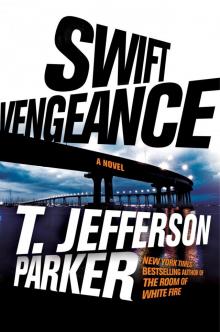 Swift Vengeance
Swift Vengeance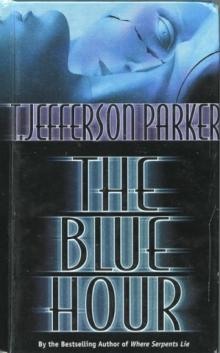 THE BLUE HOUR
THE BLUE HOUR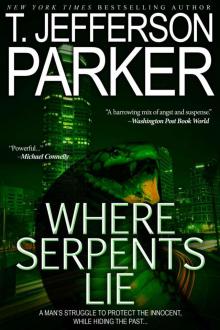 Where Serpents Lie (Revised March 2013)
Where Serpents Lie (Revised March 2013)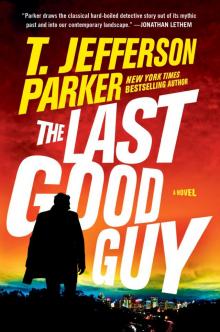 The Last Good Guy
The Last Good Guy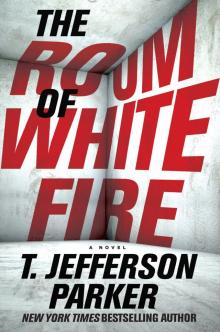 The Room of White Fire
The Room of White Fire Then She Vanished
Then She Vanished The Border Lords
The Border Lords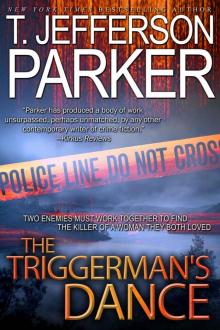 The Triggerman's Dance
The Triggerman's Dance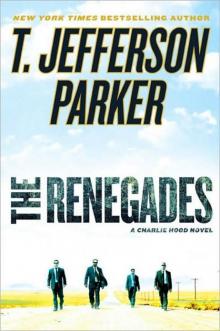 The Renegades
The Renegades Silent Joe
Silent Joe Iron River
Iron River Red Light
Red Light The Jaguar ch-5
The Jaguar ch-5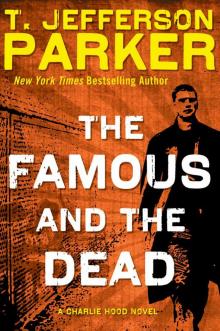 The Famous and the Dead ch-6
The Famous and the Dead ch-6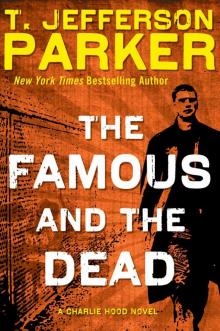 The Famous and the Dead
The Famous and the Dead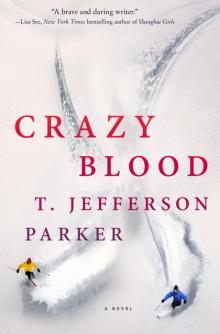 Crazy Blood
Crazy Blood Black Water
Black Water The Renegades: A Charlie Hood Novel
The Renegades: A Charlie Hood Novel Full Measure: A Novel
Full Measure: A Novel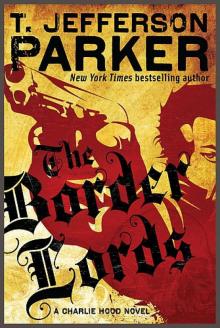 The border Lords ch-4
The border Lords ch-4 California Girl
California Girl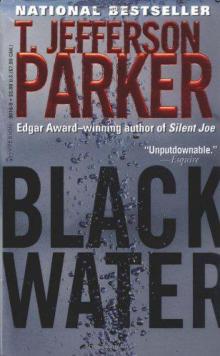 Black Water mr-3
Black Water mr-3 Little Saigon
Little Saigon L. A. Outlaws
L. A. Outlaws The Triggerman Dance
The Triggerman Dance Amazonia
Amazonia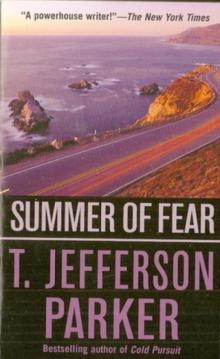 SUMMER of FEAR
SUMMER of FEAR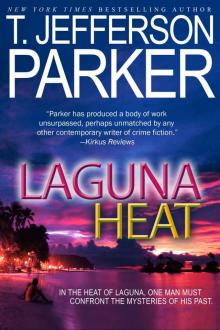 Laguna Heat
Laguna Heat The Renegades ch-2
The Renegades ch-2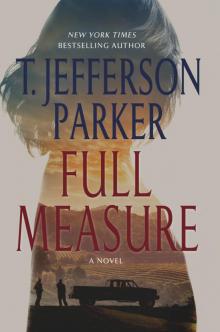 Full Measure
Full Measure